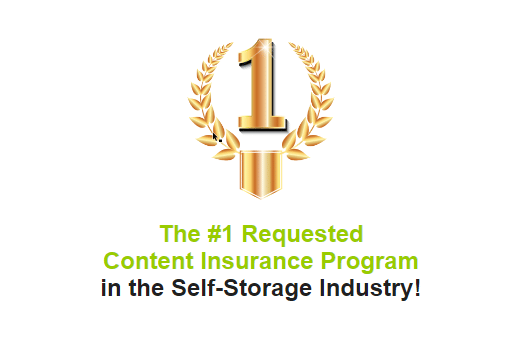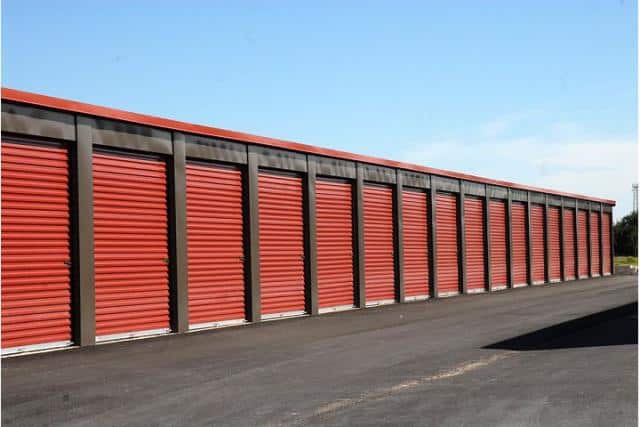- News
- Self-Storage Facility Coverage And Tips
Self-Storage Facility Coverage And Tips
Self-storage facilities have become increasingly popular in recent years as more and more people require extra space for their belongings. Whether you’re moving, downsizing, or just need to free up some space in your home or office, a self-storage unit can provide a solution for your storage needs.
However, it’s essential to understand the coverage and tips for using a self-storage facility before you rent a unit – whatever the reason for getting a rental self-storage unit.
In this blog, we will take a closer look at storage facility insurance coverage and provide tips for using a self-storage unit to ensure that your items are adequately protected and easy to access.
Insurance Coverage for Off-Premise Belongings
When you rent a self-storage unit, most storage facilities offer little or no insurance coverage for your stored items.
It’s important to note that the default insurance coverage typically has limitations if you have not paid for it. The insurance may cover loss or damage to your items from theft, fire, or natural disasters. However, it may not include damage caused by flooding or water damage. Additionally, the coverage may not be sufficient to replace the full value of your items.
To ensure that your items are fully covered, it’s a good idea to purchase insurance for your items separately. Be sure to carefully review the policy to understand the coverage limits and exclusions.
It’s also essential to understand the terms and conditions of your rental agreement. Make sure you read and understand the lease agreement thoroughly before signing it. This document will outline the terms of your rental agreement, including the rental period, payment terms, and access rights.
Standard Coverages Availability
- Property in transit
- Property on-site
- Contents within vehicles and trailers
- Burglary – forced entry
- Fire or lightning
- Explosion
- Smoke
- Falling objects
- Riot or civil commotion
- Weight of snow, ice, or sleet
- Water damage
- Vandalism
- Windstorm or hail
- Sinkhole collapse
- Sonic boom
8 Tips to Keep Your Self-Storage Facility Maintained & Insured
If you’re looking for a storage facility to declutter your home or office, here are eight essential tips to help you choose the right one.
1. Choose the Right Size Unit
Choosing the right size unit is crucial to ensure that you have enough space to store your items adequately. Consider not only the size of your items but also how much additional space you may need for future storage.
A common mistake many people make is underestimating the amount of storage space they require. As a result, they end up with a unit that is too small, and their items are cramped and difficult to access.
To avoid this problem, take inventory of your items before renting a self-storage unit. This will help you determine how much space you need to store your items adequately. Also, consider the layout of the unit and how you will organize your items to maximize the space in storage unit.
2. Label Your Boxes
Labeling your boxes is essential to make it easy to find the items you need. This will also help you avoid having to dig through multiple boxes to find what you’re looking for. When labeling your boxes, be sure to include a brief description of the contents so you know what’s inside without having to open the box.
You can use color-coded labels to help you quickly identify different types of items. For example, use a red label for items that require special handling or delicate items. Use a green label for items that you need to access frequently, such as office supplies or seasonal clothing.
3. Use Sturdy Boxes & Packing Materials
To protect your items during transport and storage, use sturdy boxes and packing materials. Avoid using old, worn-out boxes or packing materials that may not provide sufficient protection. Use high-quality packing tape to seal your boxes and prevent them from opening during transport.
When packing your items, wrap fragile items in bubble wrap or packing paper to prevent damage during transport. Use packing peanuts or foam sheets to fill any empty space in your boxes and prevent items from shifting during transport.
4. Organize Your Unit
Organizing your unit can help you maximize the space and make it easier to access your items. Consider using shelves, bins, or other storage containers to keep your items organized. You can use shelving units to store items vertically, freeing up floor space for larger items.
When organizing your unit, be sure to leave enough space for you to move around and access your items easily. Also, consider an aisle in the middle of your unit to make it easier to reach items at the back of the unit without having to move everything in front of them. This will save you time and effort when you need to access your items. Additionally, it’s a good idea to keep frequently used items near the front of the unit for easy access.
5. Opt for Climate-Controlled Units
Climate-controlled units are an excellent option for storing items that are sensitive to temperature and humidity changes. These units can help protect your items from extreme temperatures, humidity, and other environmental factors that can damage your items.
Climate-controlled units are especially useful for storing items such as furniture, electronics, artwork, and documents. These items can be damaged by fluctuations in temperature and humidity, and a climate-controlled unit can help protect them.
6. Consider Storage Protectors for Insurance
If your renters or homeowners insurance policy does not provide coverage for items stored off-premises, it may be worthwhile to consider purchasing coverage through Storage Protectors Program to safeguard your possessions at any storage facility in Canada, US, or UK.
With our storage coverage, we can help to ensure that your items are protected against unexpected events, such as theft, fire, or water damage. However, it’s essential to review the policy’s limits, exclusions, and any additional fees or charges before selecting any self-storage coverage options. By taking the time to carefully consider insurance coverage, you can have peace of mind knowing that your items are properly protected.
We strive to provide our customers with the best storage solutions, and insurance coverage is an essential part of that. So, whether you’re storing personal or business items, we’re here to help you protect them.
7. Ask for Off-Premises Coverage
It’s worth noting that some standard homeowners and renters insurance policies do provide coverage for personal belongings stored off-premises, including in a storage facility. This coverage typically includes protection against theft and damage from specified perils such as fires and tornadoes that are listed in the policy.
However, it’s important to understand that off-premises coverage often comes with certain limitations and exclusions. For instance, it may not cover damage caused by natural disasters such as flooding or earthquakes, as well as issues like mold and mildew, vermin, or poor maintenance. Check policy limits and restrictions to ensure sufficient protection for stored items. Insurance companies may have different terms.
8. Consider Special Insurance or Storage for Expensive Items
Valuable items such as art, antiques, jewelry, or furs may have dollar restrictions for theft under your standard homeowners or renters insurance policy. To fully cover these items, consider adding a floater to your policy and ask your insurance professional about it. For such items, specialized storage facilities are available that maintain specific temperature and humidity levels. For smaller valuables like jewelry, a bank safe deposit box may be a cost-effective option, although the contents are not insured by the bank.
To ensure that your stored items are properly protected, create an inventory of these items and add them to your home inventory. This will help you keep track of your belongings and ensure that you have adequate insurance coverage. For further guidance, consider using this questionnaire to find the right storage facility.
Self-Storage Facility Is Ideal for Storing Your Belongings – Get a Quote!
Renting a self-storage facility can be a convenient and cost-effective option for storing your belongings. To ensure that your items are protected and easily accessible, it’s important to follow the coverage and tips discussed.
By taking the necessary steps such as selecting the right unit size, packing your items correctly, and utilizing security measures, you can have peace of mind knowing that your possessions are well taken care of in a self storage facility.
If you are looking for self-storage unit insurance, request a quote by filling out a quick form at storageprotectors.com
Or, call Storage Protectors at (480) 900-8300

I am a:
Quote Request Submitted
Quote Request Complete!
Quote Request Complete!
 File
File 